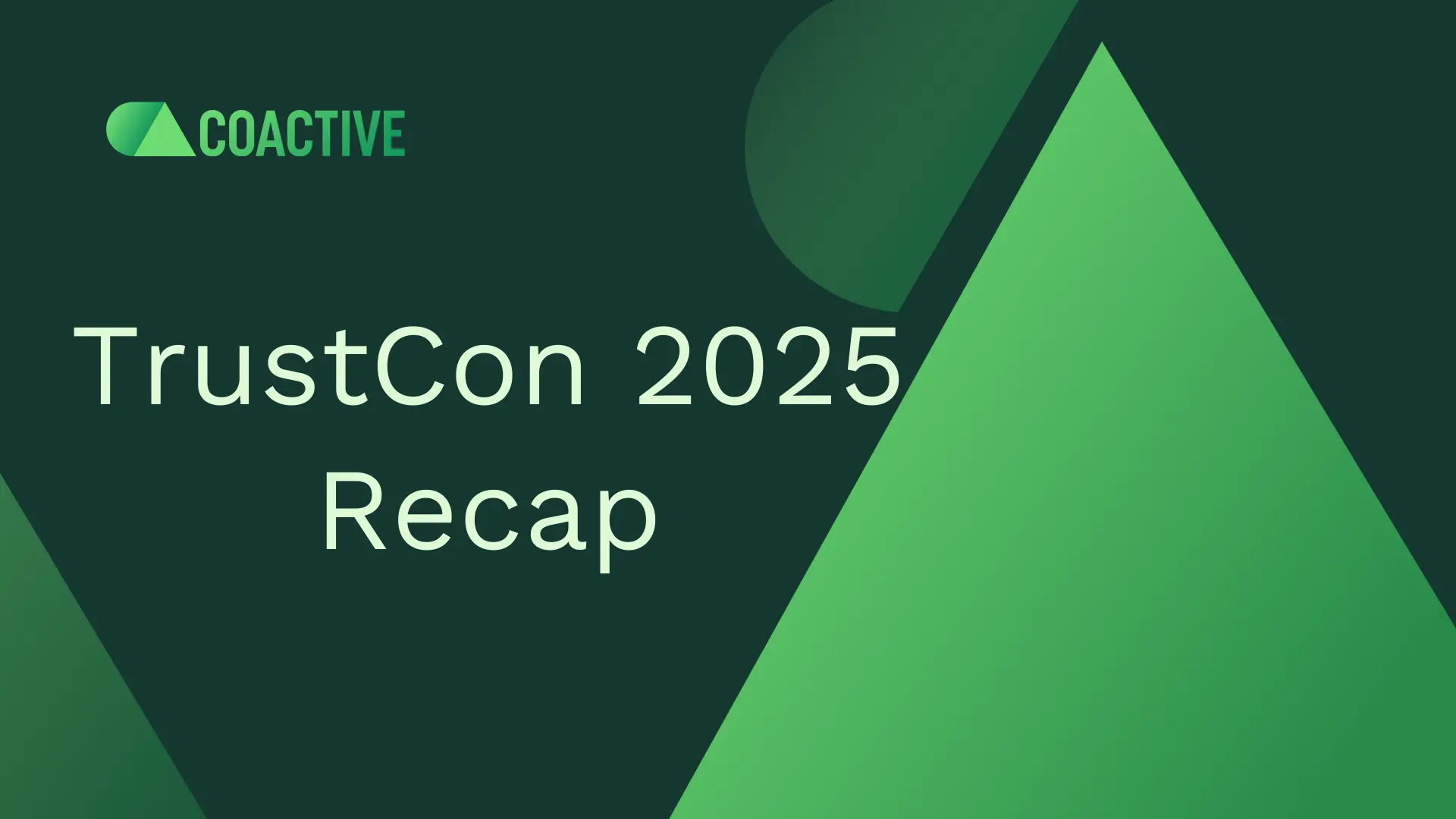


TrustCon 2025: Improving Trust & Safety to Drive Effectiveness and Psychological Safety


As a first timer at TrustCon San Francisco, I was really impressed by the thoughtfulness and passion of the participants, as well as their eagerness to share ideas. I was especially struck by the depth of care around managing the well being of Trust & Safety teams, and the conversations around the policies, tools, and psychological approaches and interventions that can help agents do their jobs effectively, while minimizing harm.
Here are my takeaways from the sessions that I attended about the processes, tools, and support necessary to run effective content moderation programs.
1. Define a standard for psychological safety
Trust and Safety (T&S) teams face unique exposure to trauma-inducing content, yet approaches to psychological safety are inconsistent and there is no recognized industry standard. At one in-depth session, I participated in exploring what a meaningful wellness standard might look like. Some of the ideas included:
- Psychological support should embrace the full hierarchy, not just the front line. Wellness protocols are more effective when they include not only the front-line agents, but also team leads, managers, and support staff. The cumulative impact of moderating content has effects across the organization, so wellness interventions should recognize that.
- Create a standardized taxonomy for high-harm content, which allows teams to better assess risk levels and tailor interventions. This also allows for the more effective implementation of automated tools to assist with content screening.
- Be proactive and not reactive. Proactive measures like automatic break mandates, assessing negative exposure, and switching agents to low-intensity queues may help to prevent burnout.
- Provide a broad range of interventions to accommodate preferences. One-on-one therapy and group therapy sessions were common options, although there can be pushback from agents who are mistrustful of therapists or are uncomfortable with that type of intervention and need to gain trust with it over time. So having other options beyond live therapists is important.
- Recognize that there might be cultural differences in receptivity to psychological interventions: Culturally attuned care matters. For example, one participant noted that Hispanic agents may prefer somatic interventions like the Emotional Freedom Technique (EFT) “tapping” over talk therapy.
- Regional adaptability: Standards may need to be adapted by region, considering cultural norms and religious observances. For example, in a majority Muslim location, there might be queue reassignment during Ramadan, with queue flow going to non-Muslim regions.
- Recognize that there might be cultural differences in receptivity to psychological interventions: Culturally attuned care matters. For example, one participant noted that Hispanic agents may prefer somatic interventions like the Emotional Freedom Technique (EFT) “tapping” over talk therapy.
- Hire and train support professionals with intention. The most effective psychological support professionals providing 1:1 or group therapy are those that are fluent in T&S culture and terminology. Untrained or misaligned help can worsen the problem, since they are not as aware of the nuances and challenges of the role. For this reason, investing in training for psychological support professionals might be necessary before they are embedded with a T&S team.
There was a strong belief that wellness shouldn’t be regarded as optional, since it is fundamental to agent and manager job satisfaction, effectiveness, and retention. As a result, there was concern that a lack of standards across the industry meant that agent experience and support can vary wildly, leaving some agents with too little support and lasting negative effects. For this reason, there was support for a third-party audit framework that could be led by a government or nonprofit body.
2. Wellness has a business case
Trust and safety leaders, and the mental health practitioners on the T&S team, can often better secure internal funding for wellness initiatives when it is clearly tied to the business goals of the organization. Demonstrating clear cost savings or improvements to performance make it more likely that requests get authorized or that wellness programs are retained.
- Improving agent retention: “I can take an 18-24 month work expectancy and double it,” shared an experienced, in-house mental health professional.
- Positive performance impact: One example mentioned was that controlled studies showed microbreaks (5 minutes every 90 minutes) improved both accuracy and handling time (review time).
- Reducing litigation risk: Burnout and behavioral issues become HR and legal liabilities when unaddressed.
Providing hard data, in addition to anecdotal or survey data, helps to convince those outside of Trust & Safety who may actually control the budget. For example, companies can benchmark key metrics - such as absenteeism, presenteeism, average handle time (AHT), and accuracy - six months before and after wellness interventions. There is additional authority when these benchmarks are measured and reported by third-parties.
3. Rethink tooling and workflows to be more comprehensive, with an AI assist
Today, content moderation teams are often juggling disconnected tools, which can make it challenging to ensure policy adherence, disposition content quickly, and get assistance or psychological support when required. Tackling the components of the job often requires switching back and forth between systems, or referencing policy docs that are not centrally maintained (that is, it’s unclear if the agent is working against the most recent policy requirements). Also, teams are often handling content volumes without AI screening first, which means that they are exposed to the worst content and handling large content volumes, rather than only handling automatically screened, “gray area” cases.
- The goal of a unified solution: Managers thought that current tooling was too disjointed, and wanted unified tooling to check policy, disposition content, request support, and access wellness resources.
- Ramping exposure up and down: There was also a desire for adaptive platforms that could increase content difficulty gradually, or better load balance content volume and types of content among teams.
- Centralized policy management: Changes in policy can directly affect agent productivity—this can be accounted for with a canonical, updated policy source and managed in UI/UX with policy update notification and examples, so that there is a faster adaptation period to policy changes
- Leveraging AI for content screening: Some companies are leveraging multimodal AI to pre-screen content, so that, for example, user generated content that meets policy requirements gets posted automatically, while content that is clearly against policy is automatically dispositioned, and only grey area content is screened by live agents. This reduces psychological impact on the team and reduces handling time.
- Using AI to automatically “bucket” content: For organizations that require human moderation of all content, AI could automatically categorize content into, for example, the five levels specified by internal policy, and then those queues could be routed to teams. This helps manage negative exposure and makes it possible to vary exposure among teams.
- Building wellness breaks into workflow: Innovative solutions like red flag systems that trigger mandatory breaks when thresholds are reached, or the inclusion of therapeutic games (e.g., Tetris to disrupt trauma memory) were discussed as ways to embed care into daily workflows.
TrustCon 2025 left me with a strong impression of people trying their best to do the right thing by their teams and by their customers; to preserve the engagement of online experiences, while minimizing risk and harm. The tools, processes, and professional expertise to create safe, effective, and sustainable T&S initiatives are already available, albeit in a disjointed way. What’s needed now are better standards, improved scale, and more comprehensive, human-centered workflows.
A quick note - TrustCon follows Chatham House Rules - which is that it’s fine to discuss publicly the concepts that were covered, but identifying speakers or organizations is not allowed. This blog post adheres to those requirements.
Learn how to reduce manual content review with automatic screening powered by AI. Read the use case here.



